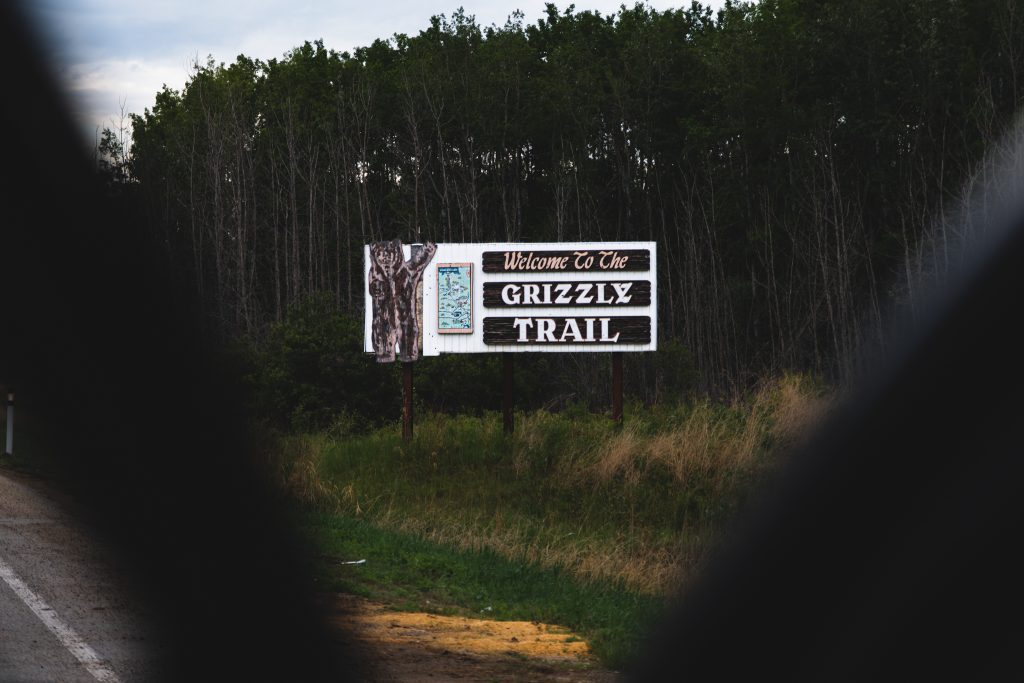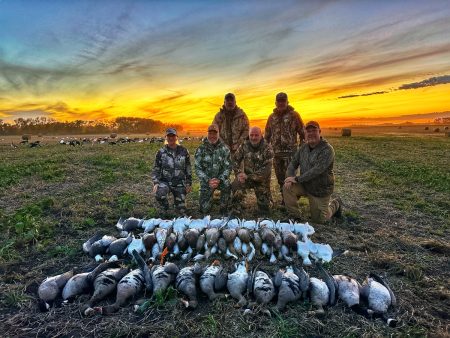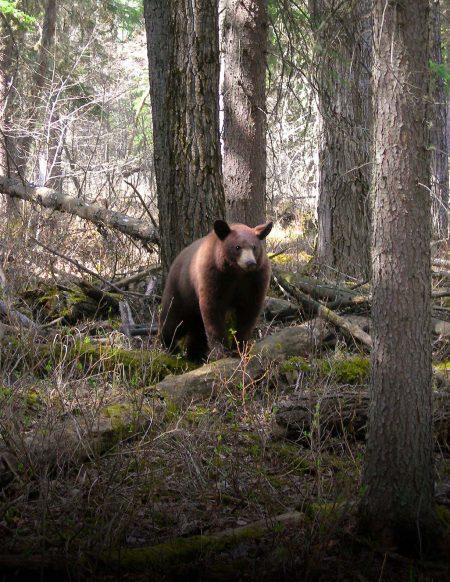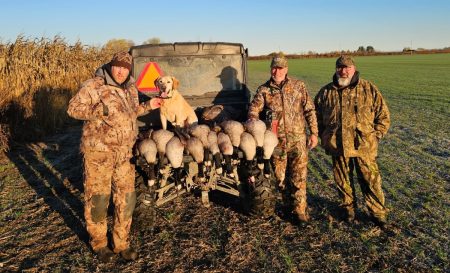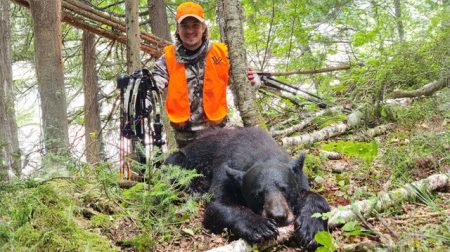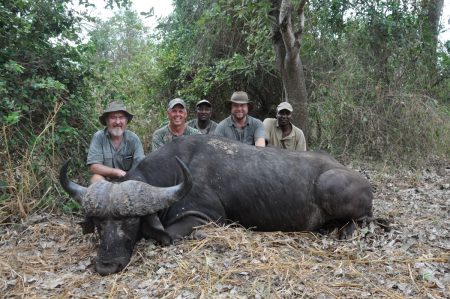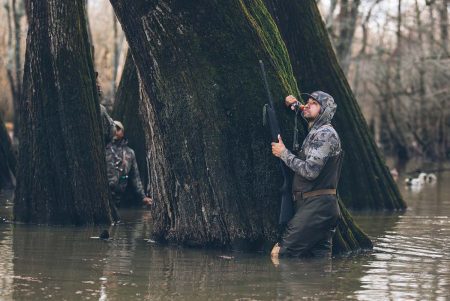Bears scare me and I’m not afraid to say it. I think having a healthy fear of something that could rip your face off with a single swipe is natural, but after taking a new role in wildlife manager/monitoring and learning a lot about bear management and human/bear conflicts, some of that fear has turned into understanding and a healthy respect.
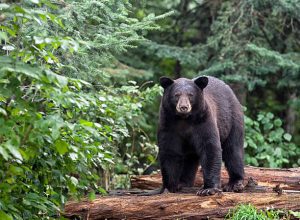
Hunting in bear country can be an exhilarating experience, but it also comes with certain dangers. According to the National Park Service, there have been 180 fatal bear attacks in North America between 1900 and 2023. All data points to an increase in bear encounters in North America over the past 20 years and in the past 5 years that number has climbed even higher. These are some of the thoughts crossing my mind as I enter the backcountry for any period of time. I know human/bear conflicts are on the rise, and grizzly populations are growing at an alarming rate, therefore, I think a healthy fear is important and keeps us aware and on our toes. The more time you spend educating yourself on bears the more enjoyable your bear encounters will be.
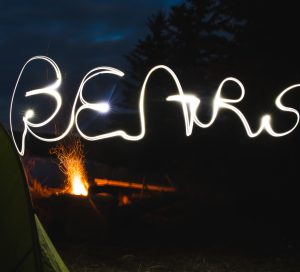
Understanding Bear Behavior
Above all other tactics and tools…this right here is your greatest asset when in bear country. Knowing bear signs, what kind of species you are dealing with and knowing how to read a bear should you encounter one is paramount. In North America we mainly have to concern ourselves with Grizzly and Black bear encounters. The further north you travel you can add in Brown Bear (think mutant grizzly) and Polar Bears.
When it comes to black bear behavior, there are certain factors to be aware of for a safe encounter. While black bears generally prefer to avoid confrontation, it’s important to understand their behavior to minimize any potential risks. It’s like human empathy, the more we can understand the other person and put ourselves in their shoes the better.
Here are some key behaviors to watch out for when encountering Black Bears:
Retreat: Like many wildlife species, a black bear’s first line of defense is usually retreat. They will often try to avoid human contact and may flee if they perceive humans as a threat. Give them an exit and 99% of the time they are going to take it.
Aggression: Although black bears are typically less aggressive compared to grizzly bears, they can still exhibit aggressive behavior if they feel threatened or if they are defending their cubs or food sources. It’s essential to give them space and avoid any actions that may be interpreted as a threat. Bluff charges and defensive behaviors can all been seen as aggressive behavior.
Defensive Behaviors: Most black bear attacks occur when they feel threatened or cornered, especially when they are surprised or protecting their young. Some defensive behaviors may include vocalizing (woofing, huffing, or jaw popping), swatting the ground, or exhibiting a bluff charge. If you encounter these behaviors, it is crucial to remain calm, speak softly, and slowly back away without turning your back on the bear.
Curiosity: Black bears are naturally curious animals and may approach people out of curiosity. They might stand on their hind legs to get a better view or sniff their surroundings. This behavior is usually not a sign of aggression but rather a way for them to investigate their environment.
Remember, black bear behavior can vary, and it’s important to educate yourself further on how to safely interact with them. I’ve heard many a black bear hunter say they understand bear behavior and can “speak the language” from years of running successful baits. I take a lot of this wisdom with a grain of salt. Yes, I know I’m ruffling some feathers, but it’s true. How often are a dozen or more bears gathered around trucked in human food sources? Not often. Its not natural. So, when you get an opportunity to watch bears in their natural habitat…soak up every ounce of learning.
Now onto the big guys. Lots of people are more afraid of Grizz than Black bears….and for good reason. Black bears typically run in fear and approach out of curiosity. Grizzlies have a bit of a different strut. In their eyes they own the forest and everything in it. When encountering grizzly bears, it’s important to be aware of their behaviors to ensure safety.
Here are some key grizzly bear behaviors to watch out for:
Defensive Behavior: Grizzly bears are highly protective of their cubs and territory. If a grizzly bear feels threatened or perceives you as a threat, it may exhibit defensive behaviors such as vocalizations (growling or huffing), charging, or bluff charging. These behaviors are meant to deter potential threats, so it’s important to remain calm, avoid direct eye contact, and slowly back away without turning your back on the bear.
Food-Related Behavior: Grizzly bears have a strong sense of smell and are highly motivated by food sources. If a grizzly bear is feeding or protecting a food source, it may display defensive behaviors and aggression towards anything it perceives as a threat to its food. It’s crucial to respect their space and never come between a grizzly bear and its food source. Remember, grizzly bears bury their kills. Watch for disturbed mounds with birds. If you come across a buried kill site, GTFO fast!
Avoid Surprising a Grizzly Bear: Grizzly bears have a keen sense of hearing and smell, but their eyesight is relatively poor. If you unexpectedly come across a grizzly bear at close proximity, it might feel startled and, in some cases, become defensive. Make noise while hiking in bear country to alert bears of your presence and reduce the chances of surprising them.
Communication Behaviors: Grizzly bears use various communication behaviors to establish dominance, defend their territory, or maintain social interactions. These behaviors include woofing, jaw popping, clacking teeth, or swatting the ground with their paws. If you observe these behaviors, it’s advisable to give the bear ample space and avoid any actions that may escalate the situation. A bluff charge is a last resort for a Grizzly to create ample space and send their warning.
Bear Safety Tips
Make Noise:
The number one way to stay safe in bear country is to make noise. Hiking maybe, hunting, not so much. The whole goal is to be as quiet as possible, so as hunters, we are removing the number one defense against bear attacks. Really try and keep this in mind when enjoying hunting in bear country: you are at increased odds of an attack. Sneaking up on a bear is dangerous and that is exactly what is going to happen. Ideally, you want to spot the bear first. Then you are able to control the situation by making noise or going down wind in order to alert the bear. On the way out at dark, however, make noise. Surprised bears are the main cause of attacks. If they know you are there they won’t want to be.
Carry Bear Spray:
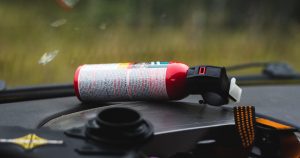
This tool right here will save your life in a bear encounter. It is THE most effective way to deter a curious or aggressive bear. I know it’s all the rage to carry a sidearm in the back country but to be honest, you’re just making yourself feel safe. I would take bear spray over a handgun any day. Most people carry a caliber too small to affect a bear in a charging state. First things first, bear spray expires! Usually has a 5-year expiration but always check before heading into the backcountry. From experience, bear spray will save your life. Next, how to use said bear spray properly:
How to use Bear Spray if a grizzly bear charges you:
- Remove the safety clip.
- Aim slightly down and adjust for crosswind.
- Begin spraying when the charging bear is 30-60 feet (10-20 yards) away. You want to create a wall of spray, not aim at the bear’s eyes. Make loud noises while dispensing your canister so the bear knows you mean business.
- Spray at the charging bear so that the bear must pass through a cloud of spray.
- Keep spraying until the bear changes direction.
Expired bear spray is a great way to practice using the can. Once expired find an open area with the wind blowing away from you. Practice emptying the canister so you can get a feel for the spray volume and spray capacity. We practice marksmanship as hunters all the time, your safety should be no different. Here is a great video demonstrating proper bear spray use:
Properly Store Food and Garbage
Always store your food and garbage in bear-resistant containers. This will prevent bears from being attracted to your campsite and potentially entering your area. Remember, bears have an incredibly strong sense of smell and will follow scents for miles. This can get even more challenging when a hunt becomes successful. There is no feeling like hiking back into a kill site after packing half the meat down the mountain or back to camp. If you find yourself in this scenario, make lots of noise. You’ve already accomplished your goal…noise is now your friend. Store your successful harvest in game bags high in a tree or bear safe containers away from camp. I also prefer to use the gutless method in the field when in bear country to reduce the odor I send out. When preparing meals, it is important to cook and eat away from your sleeping area. This will decrease any potential odors that could attract bears to your tent. Additionally, properly dispose of food waste by burning or burying it away from your campsite. You would be shocked at the small bits of smell a bear can pick up on.
Per our affiliate disclosure, we may earn revenue from the products available on this page. To learn more about how we test gear, click here.






